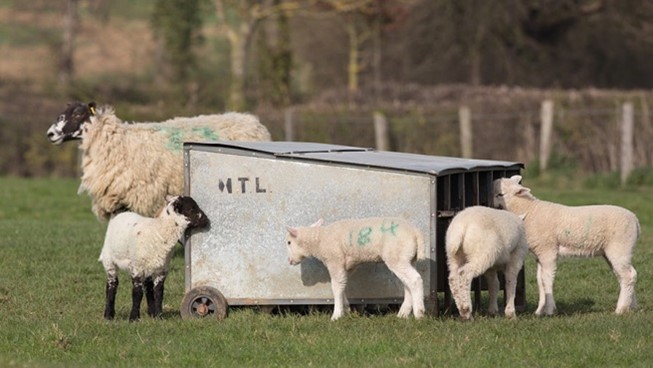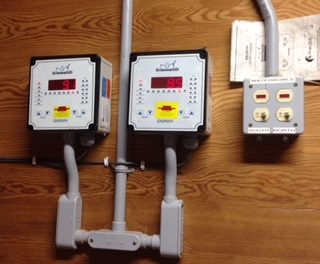This post is also available in:
![]()
![]()
![]()
![]()
![]()
![]()
Gradual weaning protocol for lambs
Solution name: Gradual weaning protocol for lambs
Aim: To provide a protocol for farmers on creep feeding that eases the weaning stress on lambs
Description:
Weaning is one of the most stressful procedures for all lambs not only in terms of the ewe-lamb relationship, but also because of its potential effect on the health of lamb. The lambs may have difficulty in adapting to the weaning, because the weaning produces weaning shock in the lambs. The level of shock manifested by reduction in post-weaning growth rate may vary depending on weaning age and weight, the intake of solid feed before weaning as well as health status of the lamb. Suckling is a major factor in the strength of the mother-young bond that usually begins at birth. At the same time with suckling, good quality roughage and a concentrate mixture in pelleted form with clean drinking water should be available in front of lambs from the second week. After the fourth week restricted suckling should be applied to encourage the consumption of solid feed. Increasing solid feed consumption stimulates rumen morphological development. The weaning is defined as the complete physical separation of mother and young, and also the transition from feeding of milk to solid feeds. In sheep production the traditional method of weaning referred to as abrupt separation is performed by separating lambs from their dams without applying any treatment before weaning. The weaning age of lambs may vary between 4-16 weeks. It is recommended that lambs should not be weaned until they reach 3-4 times of their birth weights or 12-13 kg live weight. Weaning weight is an important factor of influence on later growing rate and should be considered as important criteria for lamb weaning determination Body weight is more important than weaning age on lamb growth and it should be considered on weaning decision. The success of early weaning must depend partly upon the speed with which the rumen development in lambs.

Topic: Nutrition
Production: Dairy / Meat
Animal Category: Replacement
Issue: Weaning transition management (Replacement)
Level of Solution: Knowledge
Country: Turkey

How to implement it
A practical way is using the Creep feeding method, Here is the guide how to implement;
- Good quality roughage and a concentrate mixture from second week for lambs (as early as 10 days of age) would be necessary
- 200-250 g of creep feed per head per day from 20 days of age to weaning.
- Clean drinking water.
- Replace the feed in the creep daily (Old creep feed may be given to the ewe flock).
- Utilize covered feeders that minimize contamination from lambs standing or playing in the feeder.
- Feedstuffs high in palatability for young lambs include soybean meal, ground corn, and alfalfa hay (if possible, only leaves should be given).
- These diets should be formulated to contain 20% crude protein.
- The creep area should be kept dry and well bedded.
- The creep area should be large enough that the majority of the lambs may be in it at any one time.
- Creep gates should provide spaces between 20 to 30 cm to allow lambs in but keep ewes out.
- As the lambs get to 4 to 6 weeks of age and older, coarser feeds become more palatable. During this time, lambs may be gradually switched to a complete pelleted ration or a ration containing cracked corn and supplement (16%-18% crude protein).
Expected benefits
- Lambs could be marketed earlier for higher prices.
- Stimulates rumen development.
- Weaning stress may reduced
Cost Benefit analysis
Weaning transition management is one of the most important management elements in a farm. There might be a lot of lamb loses during this period which can affect the farm income up to 60%. Thus having a strategy for wen the lambs and manage this period with less stress can improve the feed efficiency-thus cost efficient production.
Sustainability analysis
Less stress in the animals will improve the feed efficiency and overall welfare. This will also impact the farmers social acceptance and image.
Prerequisites and/or limits
- Farmer needs to pay more attention and spend more time in the sheep barn
- Observing lambs from suckling to feed transition period
- Early weaning eases the lactation stress of high-producing ewes, especially young ewes.






